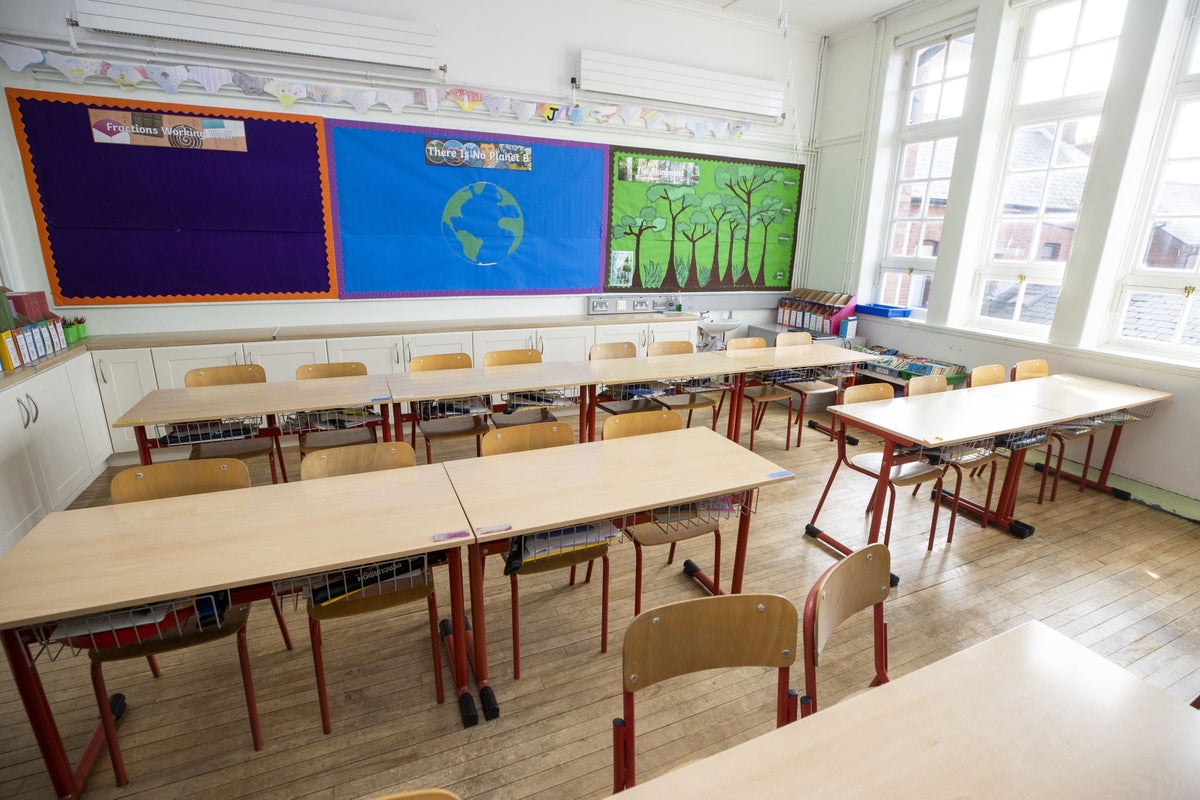
Teachers in England who are members of the National Education Union (NEU) will take part in a latest walkout on Tuesday 2 May, which threaten disruption to more than 22,000 schools.
The walkout is the fifth undertaken by educators this year as professionals demand improved pay and working conditions in response to the cost of living crisis.
Following a period of intensive talks with unions, the government had offered teachers a £1,000 one-off payment for the current school year and an average 4.5 per cent pay rise for staff next year but this was rejected and has since been withdrawn.
Teachers are joining a host of other workers like junior doctors, civil servants and driving examiners on the picket lines in May after a long winter of discontent that has seen the country regularly brought to a halt by staff seeking fairer wages.
Here, we address the key questions about the teachers’ strike.
– Why are teachers striking?
Teachers in England’s classrooms were paid an average of £38,982 in the 2021/22 school, according to the BBC, which compares with £39,009 in Wales and £40,026 in Scotland.
The average head teacher’s salary in England was £74,095 and other senior leaders were paid £57,117 for the same period.
Teachers in England were granted a 5 per cent pay rise in September 2022 and the independent pay review body has recommended a further 3 per cent rise for this coming September.
However, the Institute for Fiscal Studies has found the teachers’ salaries in England actually declined by 11 per cent between 2010 and 2022 once inflation is taken into account, while unions claim pay has fallen by as much as 23 per cent in that time.
As such they are demanding above-inflation pay increases, plus additional money to ensure any rise is not taken from existing school budgets.
Following strikes in February, the government offered a £1,000 one-off payment and a 4.5 per cent pay rise for most staff from September, which the Department for Education described as a “fair and reasonable offer” but which the NEU branded “insulting” as all four unions involved rejected it, prompting Ms Keegan to withdraw the offer.
Teachers in Northern Ireland have meanwhile been offered a 3.2 per cent rise but are holding out for 6 per cent.
Educators represented by the NEU in Wales have agreed an increased pay offer of 8 per cent for 2022/23 and a 5 per cent increase for 2023/24 but their National Association of Head Teachers counterparts have rejected it, calling for further talks.
In Scotland, the dispute has been resolved outright after unions accepted a 7 per cent rise for 2022/23, backdated to April, and a 5 per cent rise this month, climbing to 2 per cent in January 2024.
– What are schools doing?
Some schools in England are due to close their doors to all pupils on Thursday and Tuesday as a result of the latest round of strikes, with children told to stay at home.
Other schools will be partially closed so they can prioritise children who would benefit most from in-person teaching, such as those sitting exams as well as vulnerable pupils and key workers’ children.
In some schools, there may be little or no impact from strike action and they will remain open.
Headteachers will carry out risk assessments to work out whether their schools can open safely with reduced staffing numbers.
The latest strikes follow on from action in Northern Ireland on Wednesday 26 April, when most schools closed in response to a strike call from five unions representing teachers.
– How will parents and pupils know what disruption they could face?
The decision on whether to close fully or partially is down to individual headteachers.
Many schools will have already written to families to let them know if pupils will not be able to come in while others are likely to include their most up-to-date plans on school websites.
Some local authorities are publishing details on school closures in the areas on their own websites.
Education secretary Gillian Keegan has called on the NEU to encourage its members to alert heads if they intended to take strike action to help schools make operational decisions.
The NEU is required by law to provide schools with the number of members that it is calling on to take strike action in each workplace but the union does not have to provide the names of members.
School leaders will have made plans based on the number of NEU members in their school but they will not know fully who will be available for work until the day itself.
– How could parents be affected by the strikes?
Parents of school-aged children may need to take leave from work, or arrange alternative childcare, if their child has been told not to come into school.
Jonathan Broadbery, director of policy at the National Day Nurseries Association, has also warned the present wave of strikes could have “a serious knock-on effect” for nurseries as staff may struggle to find childcare.
There is a worry some parents could remain in the dark about possible disruption until the morning of the strikes as that is when heads will have a full picture of how many staff have decided to strike.







